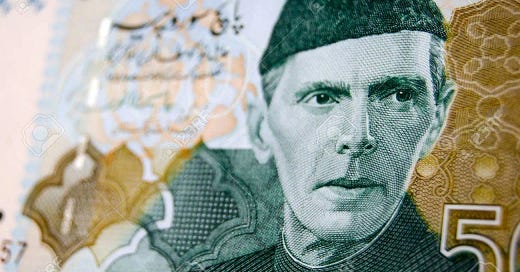Growing up, my family being from Pakistan wasn’t really something I fully took stock of. All of my childhood friends knew I was Pakistani and I was happy to be, but I wasn’t really invested until I’d visited and connected with family there more and seen the ownership my father took in both countries. Today, I take pride in my lineage and where it comes from. Sure I may not have been the most active student in the PSA in college, but I value my roots and care about the people living there. My ancestors moved to Pakistan for economic opportunity pre-partition just as my father and uncles moved to America for the same, so I’ve been thinking about the economic outlook.
These days I’m really hesitant to lend an uncritical eye to either Pakistan or America in how I view their governments and leaders. Pakistan is far from perfect and there are many discussions to be had on whether it’s operating as initially intended. However, I recognize how arrogant it can be as a Pakistani American to chime in on issues I don’t live through or fully understand the history behind. That’s probably another topic for another day, but in honor of the below closing line from a 1940 speech by Muhammad Ali Jinnah, the founder of Pakistan, I wanted to share some optimism about the country’s economic trajectory.
“Come forward as servants of Islam. Organise the people economically, socially, educationally, and politically, and I am sure that you will be a power that will be accepted by everybody.”
Pakistan has a population surpassing 220 million people, making it the 5th largest country in the world if you’re using this as a measure. The median age in Pakistan is around 21 to 23 years old, meaning more than half of the population in Pakistan is younger than me. With increasing internet adoption towards almost half the population, a younger and more technology-friendly generation is growing into the workforce with time. Right now, more than a third of the workforce is employed in agriculture. I’m curious about this moving forward due to the growth in investments towards Agritech startups generally, which promotes agricultural technology that helps drive up efficiency and profitability for farmers while also enabling more sustainable and climate-friendly farming practices. Here’s a list of 10 interesting ones.
As an aside, I met a much younger South Asian student at a UT Austin workshop this year who was working on an idea in this space called Gazelle to help farmers make money on offsetting carbon emissions. He was humble enough to ask me about my experiences while he ultimately went on to win $75,000 with his team in a competition we didn’t even make the final round of. Humility is a strength in a world of insecurity.
Another exciting trend is the investment appetite by both overseas Pakistanis and foreign investors towards emerging businesses in the country. They’ve raised more than $300 million in venture capital (investors willing to bet on risky ventures early in their journey), which is more than the past 5 years altogether. One such example is Aatif Awan, a former VP of Growth at LinkedIn, who is all in on Pakistan now after starting his own early-stage VC fund there. He wrote about “Why Pakistani Startups Are The Next Big Thing” three years ago and circled back on that earlier this year with a breakdown of how things have progressed since he made that bet. If you find this interesting at all, I definitely recommend reading his pieces as someone working within the emerging startup scene there.
While I recognize many of these startups may fail and that it may not be ideal for a company with heavy trade imbalances to have their startups launched mostly by people outside of the country, that’s true in a lot of emerging markets. The fact that investors are now willing to take the risk on Pakistani founders and consumers is good news for innovation. Even global consulting firms like McKinsey are on notice, releasing this article earlier in May around the following question.
“With a massive young, English-speaking population and a fast-growing, tech-savvy middle class, Pakistan has many ingredients for a thriving start-up ecosystem. So why is it only now starting to live up to its entrepreneurial potential, and where is it headed?”
While there are several economic, political, and, at times, moral shortcomings of Pakistani leadership, I am hopeful that a more educated and digital generation will be able to make better progress on these issues if their entrepreneurs can stay the course on this current trajectory and ensure this attention isn’t just empty hype from risk-seeking investors. The government would be wise to preserve startup-friendly regulation and adopt a healthier, more enforceable taxation policy once they grow into mature companies to support public policy.
Donate: Despite my optimism, “Around 70% of people in Pakistani households don’t have access to clean, safe water. They use contaminated water to drink, cook and clean with.”
Reads: The Great Partition by Yasmin Khan, On Leaders and Icons: From Jinnah to Modi by Kuldeep Nayyar
Shoutout: To my great great grand-father for leaving the Indian side of Punjab for cheaper land. See you next post.



